The unmarked field archery round adds an additional layer of challenge – which can make or break an archer on the course. Judging the distance of a target accurately before setting the sight is half of the battle. These three methods are all well-known approaches – and most good field archers will at least one or a combination of these three to set yardage.
NOTE: the first method is orientated wholly towards World Archery field format.
1: 50% system
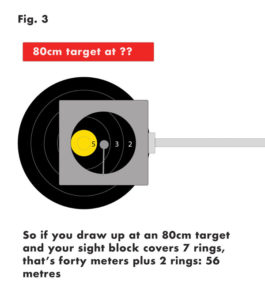 Often referred to as a cheat system, using a comparison in size between something on your bow and the size of the target is the usual method for top archers guessing distances.
Often referred to as a cheat system, using a comparison in size between something on your bow and the size of the target is the usual method for top archers guessing distances.
In short, you draw up and look at the target – and the however much of your sight covers it, tells you how far you need to shoot.
The simplest way to set it up is to move or adjust something on your sight (sight block for a recurve archer, size of dot or something similar for a compound) to cover 50% of an 80cm face at 40 metres. If, at full draw, you sit the edge of the item on your sight on one edge of the target, it’ll reach halfway across in your vision.
That will also mean it will also cover 50% of a 60cm target at 30 metres, 50% of a 40cm target at 20 metres and 50% of a 20cm at 10 metres.
It’ll mean that, in comparison, each ring is worth 10% in metres of the size of the face in centimetres. For an 80cm, eight metres; 60cm face, six metres; 40cm face, four metres – and 20cm, two metres.
So, if you draw up at an 80cm target, and your sight item covers six (of the 10 main) rings, that’s 40 metres plus one ring (eight metres), equalling 48 metres. If it covers four-and-a-half rings on a 40cm face, that’s 20 metres minus half (four divided by two), which is 18.
This system relies on you drawing up consistently each time – and understanding how your sight picture changes in different environments, including changes in light and dark.
2: Distance splits
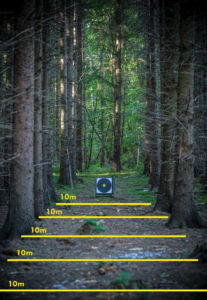 This works better in tree-lined environments and on targets when you can see the ground. Dips, hidden potholes and empty spaces can throw you off.
This works better in tree-lined environments and on targets when you can see the ground. Dips, hidden potholes and empty spaces can throw you off.
Split the ground between you and the target into manageable chunks and estimate the distance of each of them, adding them together to get a handle on how far away the target is.
It’s not super scientific – but is critically useful when needing to choose between the distances of a 60cm and 80cm face because they look very, very similar. (The two largest targets are laid out individually, while 40cm and 20cm targets are usually laid out in groups.)
Train your eye to measure splits by guessing distances when walking somewhere. Stop, estimate, and then pace it out to see how far off you were. The further away the chunks of ground are, the closer the edges of that chunk will look to your eye.
3: Memory
Since there are rules against taking advanced distance guessing notes onto a field course, the only way to store such tidbits is in the brain.
It comes with practice, but there’s nothing better than intuition and experience when it comes to taking a first guess on a distance. And it’s usually good practice to start with a distance in mind, and then use the above methods to confirm or adjust it.
Practise distance guessing by setting up a boss with field targets of various sizes and then randomly choose a shooting position. (Of course, make sure your shooting environment is set up safely for this.) Then measure using a tape or rangefinder. It won’t be long before you get a pretty good eye for how far away a target is just by how it looks from the shooting peg.


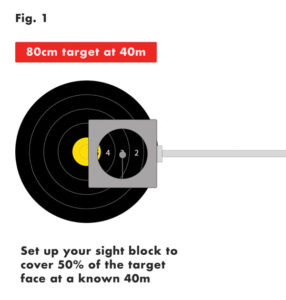
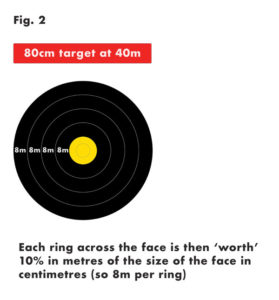
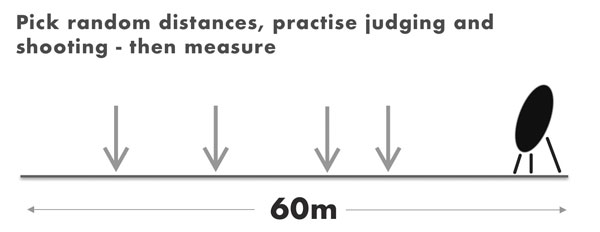
Hello,
My name is Shaffick, I am s coach and allso, a judge, and sometimes i compete. I would like any information, that can make me better and more effecient.
Thank You,
Shaffick.
How the distance can increase if the sight looks bigger compared to the target?